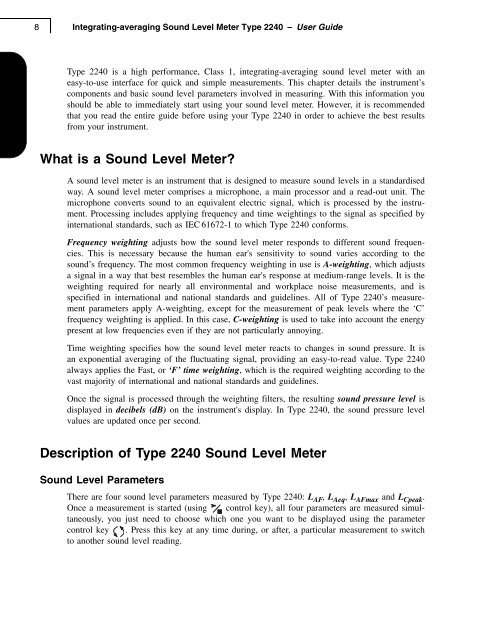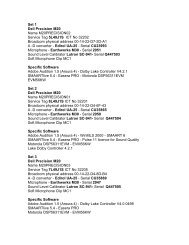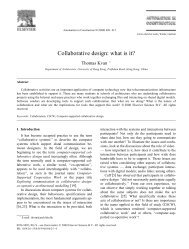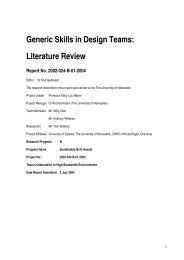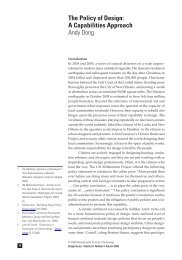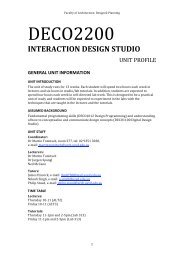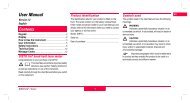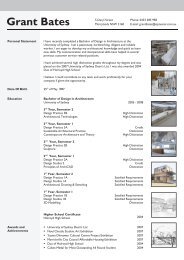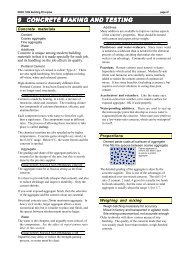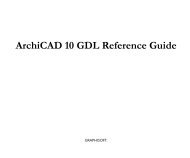bruel & kjaer 2240 sound level meter
bruel & kjaer 2240 sound level meter
bruel & kjaer 2240 sound level meter
Create successful ePaper yourself
Turn your PDF publications into a flip-book with our unique Google optimized e-Paper software.
8<br />
Integrating-averaging Sound Level Meter Type <strong>2240</strong> – User Guide<br />
Type <strong>2240</strong> is a high performance, Class 1, integrating-averaging <strong>sound</strong> <strong>level</strong> <strong>meter</strong> with an<br />
easy-to-use interface for quick and simple measurements. This chapter details the instrument’s<br />
components and basic <strong>sound</strong> <strong>level</strong> para<strong>meter</strong>s involved in measuring. With this information you<br />
should be able to immediately start using your <strong>sound</strong> <strong>level</strong> <strong>meter</strong>. However, it is recommended<br />
that you read the entire guide before using your Type <strong>2240</strong> in order to achieve the best results<br />
from your instrument.<br />
What is a Sound Level Meter?<br />
A <strong>sound</strong> <strong>level</strong> <strong>meter</strong> is an instrument that is designed to measure <strong>sound</strong> <strong>level</strong>s in a standardised<br />
way. A <strong>sound</strong> <strong>level</strong> <strong>meter</strong> comprises a microphone, a main processor and a read-out unit. The<br />
microphone converts <strong>sound</strong> to an equivalent electric signal, which is processed by the instrument.<br />
Processing includes applying frequency and time weightings to the signal as specified by<br />
international standards, such as IEC 61672-1 to which Type <strong>2240</strong> conforms.<br />
Frequency weighting adjusts how the <strong>sound</strong> <strong>level</strong> <strong>meter</strong> responds to different <strong>sound</strong> frequencies.<br />
This is necessary because the human ear's sensitivity to <strong>sound</strong> varies according to the<br />
<strong>sound</strong>’s frequency. The most common frequency weighting in use is A-weighting, which adjusts<br />
a signal in a way that best resembles the human ear's response at medium-range <strong>level</strong>s. It is the<br />
weighting required for nearly all environmental and workplace noise measurements, and is<br />
specified in international and national standards and guidelines. All of Type <strong>2240</strong>’s measurement<br />
para<strong>meter</strong>s apply A-weighting, except for the measurement of peak <strong>level</strong>s where the ‘C’<br />
frequency weighting is applied. In this case, C-weighting is used to take into account the energy<br />
present at low frequencies even if they are not particularly annoying.<br />
Time weighting specifies how the <strong>sound</strong> <strong>level</strong> <strong>meter</strong> reacts to changes in <strong>sound</strong> pressure. It is<br />
an exponential averaging of the fluctuating signal, providing an easy-to-read value. Type <strong>2240</strong><br />
always applies the Fast, or ‘F’ time weighting, which is the required weighting according to the<br />
vast majority of international and national standards and guidelines.<br />
Once the signal is processed through the weighting filters, the resulting <strong>sound</strong> pressure <strong>level</strong> is<br />
displayed in decibels (dB) on the instrument's display. In Type <strong>2240</strong>, the <strong>sound</strong> pressure <strong>level</strong><br />
values are updated once per second.<br />
Description of Type <strong>2240</strong> Sound Level Meter<br />
Sound Level Para<strong>meter</strong>s<br />
There are four <strong>sound</strong> <strong>level</strong> para<strong>meter</strong>s measured by Type <strong>2240</strong>: L AF , L Aeq , L AFmax and L Cpeak .<br />
Once a measurement is started (using control key), all four para<strong>meter</strong>s are measured simultaneously,<br />
you just need to choose which one you want to be displayed using the para<strong>meter</strong><br />
control key . Press this key at any time during, or after, a particular measurement to switch<br />
to another <strong>sound</strong> <strong>level</strong> reading.


